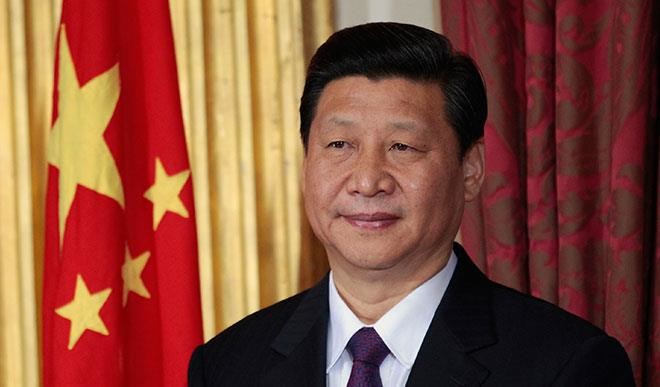Nipping China’s semiconductor manufacturing ambition in the bud
It’s a familiar story in the evolution of technology in China: start at the bottom rung of the ladder in a particular technology, come up with a humongous vision to compete and lead, diligently develop workable plans that could be used to realize the vision, pump in “billions” of people and dollars into the plans, […]


It’s a familiar story in the evolution of technology in China: start at the bottom rung of the ladder in a particular technology, come up with a humongous vision to compete and lead, diligently develop workable plans that could be used to realize the vision, pump in “billions” of people and dollars into the plans, follow through with the plans by hook or crook, and persistently work the plans independent of adversity.
In most of these technology areas, the US has always been the leader and the incumbent to beat. This has been the case for the aerospace industry, the computer industry, and, to some extent, the Information and Communications Technology (ICT) industry. The Chinese semiconductor (SC) industry – the industry that manufactures computer chips, amongst other highly sensitive national security-related products – may also be going through a similar path. A decade or so ago, China had essentially zero portfolio in the SC industry. The country did not have a single domestic manufacturer among the top 10 biggest computer chip makers, with US companies dominating the list. Moreover, Chinese homegrown chips accounted for less than one-tenth of the local demand. In 2013, China spent more money importing chips than it did importing oil.
China’s motivations in upping its SC portfolio include reducing its dependence on foreign technology, especially in the face of the back-and-forth on cyber espionage with the US. In mid-2015, it was reported that China was investing as much as $161 billion over 10 years to develop chips. China’s success in the endeavor will not only limit the amount of imported SCs; in the long run, China could actually start exporting the stuff. Thus, current industry leaders – which are mostly in the US – have a good reason to be nervous, since everything in China is big: China could mass produce computer chips, with the capability to export them to many countries of the world. In Asia tech landscape, this could be déjà vu all over again, as South Korea and Taiwan used a similar strategy in the 1980s to accelerate the rise of Samsung Electronics and Taiwan Semiconductor Manufacturing. (Less than 12 percent of the sales from either of these two countries come from its domestic home market.)
The foreign SC industry leaders are making some preemptive moves to make conditions favorable for China to do business with them. Ian King of Bloomberg (25 June 2015) notes that, “Even the most advanced companies in the $300 billion chip business are spending more cash and sharing more technology so they can keep hawking their wares in China. Qualcomm, the world’s biggest maker of mobile processors and modems, paid a $975 million fine in February to settle a Chinese antitrust investigation; it also reduced the fees it charges Chinese phone makers to use its chips. Qualcomm has announced a $150 million China investment fund, promised to set up a joint venture to design server chips in the mountainous southwestern province of Guizhou, and teamed with Chinese companies. It has agreed to outsource some production to Shanghai-based Semiconductor Manufacturing International.”
Intel, who realized 20 percent of its $56 billion annual revenue in 2015 from China, has committed more than $3 billion since September 2015 to upgrade its Chinese plants and invest in Chinese-government-run mobile chipmakers. As King states, Intel has managed to avoid roadblocks from Chinese regulators, as has NXP – the Dutch SC company who realized 49% of its 2014 sales from China – which, through a joint venture with Datang Telecom Technology, has become China’s biggest supplier of chips used in cars and trucks.
It is not difficult to imagine that foreign chip makers like Qualcomm, Intel, and NXP, will do okay in China only as long as China needs them. When this equilibrium changes and China can handle the tech challenges on its own, the companies will most likely be shown the way back home. As King notes, the foreign chipmakers’ advantage is experience in building and operating the factories that drive the business. “A state-of-the-art plant costs more than $5 billion to build and equip and can become obsolete in as little as five years.” Until Chinese companies can match the technology and designs of foreign partners, they’ll need help. Thus, when China eventually perfects the chip-making technology, the foreign companies will most likely be hit with China’s protectionist stick, and eventually be sent packing.
The prospect described in the foregoing might as well form a basis for the US government’s decision to block China’s efforts to acquire SC manufacturing companies from the West. In particular, a report out last Friday, 6 January 2017, recommends that steps be taken to defend US’s dominance of high-end SC market against a potentially stiff Chinese challenge. A crucial factor is the fact that semiconductors are key to national defense. The report urged policy-makers to “respond forcefully” if Chinese economic policies, such as subsidies aimed at building Chinese expertise in semiconductors, “limit the access of U.S. companies or thwart U.S. exports.”
